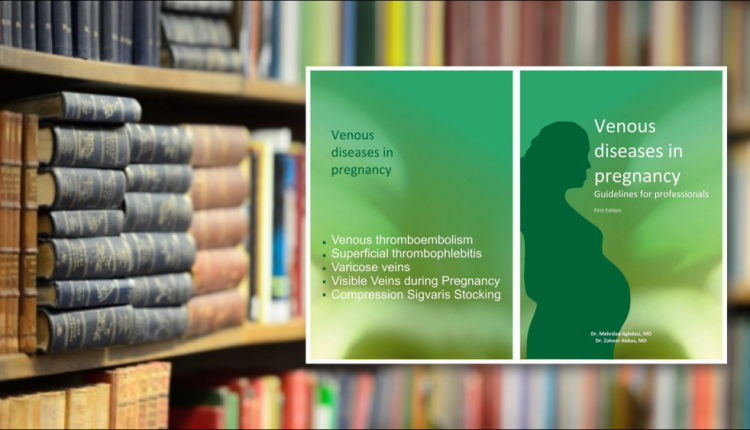
Venous Diseases in Pregnancy – Guidelines for Professionals
Dear doctors, my colleagues and I have tried to provide a set of practical information on the important diseases such as DVT in the pregnancy, and also the common diseases such as the varices for a year.
. References have been mainly selected among the newest guidelines articles and the valid sources. The mentioned set has been reviewed by Professor Eklof, the head of the varicose forum of Europe; he is a valid famous person in the varicose diseases. The target group is primarily comprised of the obstetricians; it is secondly used by the consultants including the anaesthetists.Venous thromboembolism is the most common cause of the mothers` death in the developed countries; varicose disease is also the most common manifestation of the coronary diseases in women. So I hope to see this book useful for treating patients in case of necessity.The doctors can call Ms. Valipoor, the clinic secretary for providing the free book. I am waiting for your comments and suggestions for improving the book in the next publications. Doctor. Mehrdad AqdasiLet`s take a brief look at some of the contents of the book
Management of Anticoagulant Therapy at the Time of Delivery
Women requiring therapeutic doses of LMWH should.
Spontaneous or Planned Delivery? Cesarean SectionDelivery by
cesarean section should only be decided on the basis of
Time off Anticoagulation
Heparin therapy generally is stopped during labor and delivery. If the uterus is well contracted and there has been negligible trauma to the lower genital tract, it can be restarted after about 12 hours. Otherwise, a delay of 1 or 2 days may be prudent

Postpartum Management
Anticoagulation should be restarted after delivery, as soon as possible, but depending on the amount of estimated vaginal blood loss and the type of delivery. Generally, restarting anticoagulation 6 to 12 hours after delivery is feasible, but this period should be longer if hemostasis is not adequate
Management of PE in Late Pregnancy and During Delivery
VTE occurring close to term may affect the management of delivery. Patients presenting with pulmonary embolism in late pregnancy should be treated with
Who Needs Thromboprophylaxis
Risk assessment and the recommendation comments are shown in Table 1.Women with two or more persisting risk factors should be considered for LMWH for 7 days after delivery.
Women with Previous VTE
Women with previous recurrent VTE should be offered thromboprophylaxis with LMWH antenatally and anticoagulant for 6 weeks postpartum
Women with one previous VTE
This essay is translated by Mojgan Salmani
